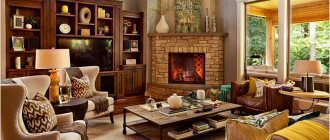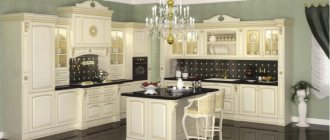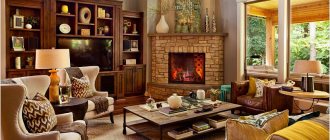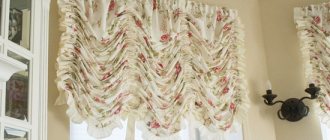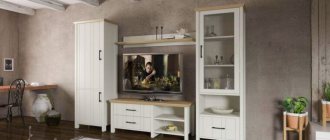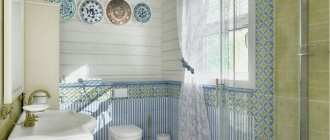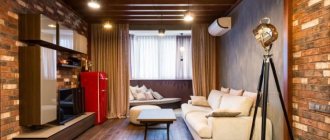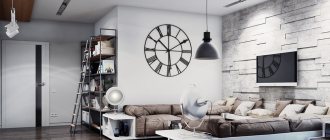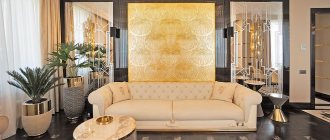The hot southern sun, endless vineyards and fields fragrant with lavender, Beaujolais wine festivals - all this is such an alluring and romantic Provence. This French province is very popular among tourists, primarily for its unique flavor.
Therefore, upon returning home, many would like to recreate a piece of it in their home. The Provence interior is best suited for a country house or cottage, as it is a rustic style with vintage elements. But, of course, if you like these ideas, they can also be applied to a city townhouse.
The main features of the Provence style in the interior Source artfinder.com
A little from the history of the origin of the style
The Provençal style was named after the region in southeastern France where it began its history. Representatives of the French bourgeoisie in the 17th century began to increasingly build their houses in the provinces. In an attempt to escape the bustle of the city and strict classics, people, inspired by the freshness of rural life and the picturesque surrounding landscapes, began to decorate their homes simply, but with characteristic French elegance. Simplicity, naturalness, old world charm - all this is reflected in the atmosphere of French country.
The popularity of the Provence style began to grow rapidly, especially among bohemians - artists and writers. In the 19th century, the new style became widespread throughout Europe.
And these days, the interiors of apartments and houses in the Provence style attract the attention of many people, thanks to the comfort it creates, the special energy and atmosphere conducive to a relaxing break from everyday hustle and bustle.
Differences between country and Provence styles
What are the characteristic features of Provence that allow you to unmistakably recognize this style and not confuse it with any other?
Undoubtedly, all rustic styles have much in common, but Provence also has its own nuances:
- When decorating the interior, bright colors are never used - they are mostly pastel, muted;
- The walls here are usually whitewashed and decorated with paintings or flowers;
- in the interior, decorated in the Provence style, there are a lot of bright fabrics with floral patterns; no other ethnic style has such an abundance of “blooming” textiles;
- the forged elements used are thin and very elegant, which, in general, is not typical for either the Scandinavian style or American country;
- houses in the French country style are distinguished by a certain minimalism, and even a kind of “coldness”: in the Provence region it is quite sunny and hot, as a result of which they try to create an environment in the premises that promotes artificial cooling (for example, the walls here are usually white with average amount of decor);
- in olive areas, large windows are usually installed in homes, which, due to differences in climatic conditions, are rarely found in other country styles.
Of course, not all of the above can be implemented in the conditions of our modern apartments, but the main thing is not to follow all the nuances exactly, but to create the necessary associations. And what are the main associations associated with this style?
Summer, sea, sun, flowering meadows, the smell of grass, the smell of spices and dried plants. And to create such an atmosphere, you don’t have to strictly follow all the rules, you just need to put all the warmth of your soul into the process.
Selecting a good color palette
Loud and too bright accents are inappropriate in the direction. The color scheme is based on pastel, slightly muted tones. In this case, the color of the walls and ceiling can be any. Powdery shades have been popular among designers for a relatively long time. However, when it comes to Provence, preference is usually given to pastel colors.
Pastel shades have their own names:
- green – mint;
- red – coral;
- orange - peach;
- purple - lavender;
- blue – turquoise;
- yellow – lemon.
These colors should be faded, as if faded or bleached by the sun, but monochromatic. There must be more white in the palette.
In addition, the room can be decorated in beige, white, pink, blue or light green.
Subtle colorsSource rehouz.info
Pastel colors have a number of positive properties: they have a beneficial effect on the nervous system and calm the psyche. In addition, they are suitable for a person with any temperament and are neutral. Therefore, these colors can be used in bedrooms with windows facing both north and south. Another positive point is the ability to combine several pastel colors and shades, as they harmonize well with each other. The same cannot be said about the bright color palette. For example, if you imagine a room decorated in blue, yellow, green and red colors, then in such a bedroom a person is unlikely to be able to relax and unwind, since his nervous system will be excited. If you experiment with pastel shades of different colors, then this combination may seem not only acceptable, but also sophisticated.
Still, leading designers recommend combining no more than three or four shades. This way you can avoid bad taste.
Girl's room Source rehouz.info
Walls, floor and ceiling in Provence style
Walls
The most commonly used wall decoration in interiors decorated in the Provence style is plastering, and the plaster is applied roughly, with bulges and irregularities, with brickwork visible through it. Textured plaster is used in the design of modern interiors in the Provence style.
Another popular type of wall decoration is covering them with boards and then painting them. Here the difference with other country styles is clearly visible: for example, in Russian country they try to preserve the color and texture of the wood, while in French, as a rule, the boards are painted white.
Glazed brick, artificial or natural stone, and tiles are used to decorate kitchen walls.
Floors
The most popular flooring options in French Country are wood planks and tiles (usually with beveled corners and terracotta or light brown). In provincial homes you can find both painted and unfinished plank floors. Laminate, parquet, carpeting and linoleum are, of course, absolutely not suitable for Provencal style apartments.
Ceilings
Ceilings are usually painted in light shades. Decorative ceiling beams are often used - usually in contrasting dark colors or, on the contrary, whitened.
Doors
For rooms decorated in Provence style, you must choose white doors. However, you can purchase ordinary wooden doors, paint them with white paint and artificially age the surface. White doors are often decorated with floral paintings.
Window
For interiors in the Provence style, French windows from the floor (a kind of window-door) are ideal. But since this is almost impossible in our apartments, you can install windows with multi-section frames instead of classic French windows. The color of the frames is usually also white.
Simple, stylish furniture
French country furniture balances on the border separating elegance and functionality. Although it is largely free of the embellishment that has historically been the hallmark of French design, it is overall elegant. And although for rural residents, especially in the past, the main thing was that each piece of furniture clearly performed its assigned functions, it was not uncommon to have multifunctional pieces or furnishings that could easily be moved to where they were most needed at the moment.
Stay away from overly monotonous furniture sets. Instead, mix wooden furniture with different surface finishes and metal ones that add an antique touch to the interior.
The seating area in this photo epitomizes the French Country approach to furniture. Upholstered chairs with armrests, a table and shelves merge in refined harmony, connected by a common color scheme of soft white and bluish-gray shades. These pieces of furniture have decorative flourishes that elevate them beyond strict practicality, but their elegance is in no way ostentatious or exaggerated.
Floral interior design
It is known that Provence combines sophistication coupled with simplicity. The main element is the floral pattern, which can be seen in the upholstery of upholstered furniture, curtains and decorative pillows.
Door and hallway furniture in a similar color scheme in a country house
The obligatory accent is flowers - rose and lavender, which embody the beauty of the Provençal village. They can be traced not only in decorative elements, but also in the decoration of premises. For example, wallpaper with delicate flowers or a floral pattern on ceramic tiles. Since the French province is famous for its natural beauty, this style involves an abundance of living plants in artificially aged pots placed around the house. You can decorate the living room with cute bouquets of wildflowers and dried flowers. Ivy branches hanging from the walls also look very interesting. For indoor plants, give preference to bluebells, violets and hydrangeas.
Flowers
The desire to blur the boundaries between inside and outside is the basis of life in rural France (indeed, throughout the country). No interior in the French country style is complete without flowers, whether they are placed in a ceramic vase, displayed on linen or carved on a wooden mirror frame.
Fresh flowers and leaves should look as if they “came” from the garden right outside your door – effortlessly and naturally. Choose flowers that grow in the places where this style was born - sunflowers, irises, poppies.
Those who gather around this table probably feel at home, at ease and very comfortable. The vase of flowers is the undoubted star of this scene. Other interior elements (a bowl of fruit, a painting on the wall, a jug decorated with a rooster) enhance the overall impression, the feeling of country life.
Decor
Provence, like all other rustic styles, loves a lot of decorative elements.
The following will look great in this interior:
- paintings with pastoral scenes or natural beauties in gilded frames;
- antique mirrors in wrought iron frames;
- caskets;
- vases;
- fresh or dried flowers;
- antique dolls;
- china;
- figurines;
- candlesticks;
- wicker baskets;
- handicraft items.
Homemade items of any kind are welcome. The most difficult thing in decorating Provence is to be able to stop without turning the room into a branch of the museum.
Warm colors
Whether they are bright, deep or pastel, the colors of French Country interior design are soft and delicate and provide comfort. White here is always warm, it’s more likely not even white, but shades of ivory, cream or pale beige. Other colors are borrowed directly from the surrounding landscape - sunny yellow, sky blue, brick red, and also the color of peonies, sage and lavender.
Essentially, the palette of this kitchen/dining area includes three primary colors - creamy yellow, deep red and a slightly muted royal blue. Since the dominant colors are used only in small strokes, they do not disrupt the casualness of the space.
Not just accents
Accessories used in interior design in Provence style are very rarely purely decorative. They usually carry a subtext of utility: wall plates that can be placed on the dining table if necessary, baskets that can be used to bring harvest from the garden, pots and jugs that can also be used for their intended purpose. An open shelving unit is a natural choice from this point of view - household items are given a place of honor here, rather than hidden behind cabinet doors.
The large candelabra on this table not only instantly attracts the attention of anyone who crosses the threshold of the room, but can also serve a very specific purpose. Once upon a time, candles were the main source of light for residents of rural France. Despite the abundance of overly intricate decorative elements on this candelabra, its potential functionality eliminates the feeling of excessive pretentiousness.
The appeal of French country is largely due to the scattering of fancy accents present in this style. And what could be more symbolic in France than the Gallic rooster? The challenge here is to limit yourself: the market is so saturated with all sorts of cock-themed trinkets that it's easy to fall into a frenzy and end up turning your home into Old MacDonald's farm from an English folk song rather than into an image of old France.
Practice the art of restraint: Buy one or two items with a rooster on them, such as a kitchen rug, a cookie jar or a painting.
Despite the figurine crowing on the island table, the rooster elements are kept in check in this kitchen. The 3D image on the hood blends into the background and you won't notice it until you look closely. A farm scene depicted on the hand-painted backsplash above the stove complements this avian theme, but in a more subtle, sophisticated way.
Accessories add charm
Provence style will be an excellent option for a child's room
Attention! A feature of the Provencal style is the abundance of various accessories in the room. They are placed on open shelves, tables, chests of drawers, and hung on the walls.
Clocks, boxes, empty birdcages, candlesticks, vases, figurines, including a rooster - a symbol of the country, beautiful dishes are placed on all surfaces. On the wall there are paintings, photographs and herbariums in wooden frames, mirrors, decorative plates.
Provencal style looks especially harmonious in country houses
Another distinctive feature of Provence is the many fresh and dried flowers placed around the room. The style allows you to use unusual containers as pots and cache-pots - teapots, watering cans, even rubber boots and boxes.
Many faces of fabrics
Just like furniture, French Country fabrics create an artful, eye-catching potpourri. The quintessence of this style is the veil, but you should not neglect other materials, checkered and striped, floral and plain. Textured fabrics such as linen and matlasse, as well as famous French tapestries, add tactile interest to the room.
Whisper of time
In a style that is a reflection of longevity and tradition, new furniture and accessories will seem somewhat alien. Provence requires a little rust and dust. Items should look as if they have faithfully served a person for many years.
Avoid shiny metal in favor of wrought iron, bronze or pewter, which is fine if the metal items show dents and other signs of frequent use. It’s not a big deal if there are slightly worn bedspreads or pillows with scuff marks in the house.
This cozy room looks like every item in it has a story - it's like the coolest second-hand collection ever. Even on new objects the presence of centuries-old dust can be felt. The shabby wood of the legs looks great against the background of faded fabric colors.
Lighting
A very good idea is to use elegant, airy-looking lamps. They are usually decorated with openwork forged elements that reproduce the appearance of ivy or grapevine. Lampshades can be made of fabric or glass, but in both cases it is advisable to paint them with floral designs. To decorate lighting fixtures, it is recommended to use porcelain and wooden parts resembling flowers or candlesticks. The main middle area of the room is illuminated by the rays of a large ceiling chandelier, which contains several light bulbs.
Such lighting devices are installed:
- on bedside tables;
- on desktops;
- near armchairs, tables, sofas;
- on the walls at the entrance to the house.
